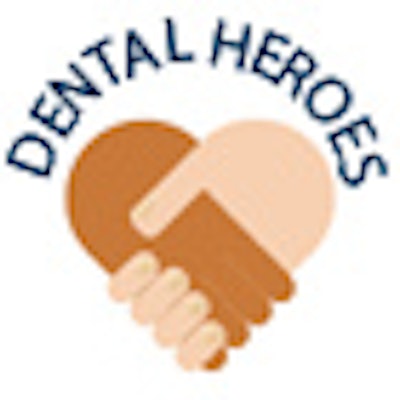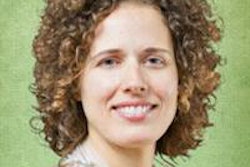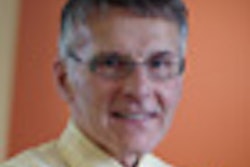
In this latest installment of DrBicuspid.com's Dental Heroes series -- designed to pay tribute to individuals in the dental community who go well beyond the call of duty -- we talk with Irvin Silverstein, DDS, MSEd, the 2010 recipient of the California Dental Association Foundation Humanitarian Award. In addition to his private periodontal practice in La Mesa, CA, and his long-time work with special needs patients, he has been instrumental in the success of the University of California, San Diego Student-Run Free Dental Clinic Project, which began in 2000.
We talked with Dr. Silverstein about the free dental clinic and how these kinds of volunteer programs can be instrumental in solving access-to-care issues -- particularly in urban areas -- and providing life-changing volunteer opportunities for students and professionals.
DrBicuspid.com: How did you first get involved with special needs patients?
 Irvin Silverstein, DDS, MSEd
Irvin Silverstein, DDS, MSEd
Dr. Silverstein: I went to Northwestern dental school from 1974 to 1978 and became a general dentist after I graduated. Then I enrolled in a new hospital residency program at the University of California, Los Angeles that dealt with special needs patients. It was a wonderful opportunity to provide dental care to people with Parkinson's disease, mental retardation, physical deformities, severe heart disease, people about to undergo a heart transplant or with severe cancer -- anything that would preclude them from a normal office visit. I then helped start a similar program in the late 1970s at University of Southern California (USC) County Hospital.
After working in those programs, I was able to deal with patients who were very difficult to handle. I also learned early on that so many people have illnesses that we can't normally deal with in an office. It increased my range and scope, and provided a service for people who have trouble finding a dentist. People don't realize that special needs is an access-to-care issue. People think access to care is all about financial or geographic challenges, but often it involves people who are too sick or frail to be seen in an office. And a lot of practitioners are too scared to handle these patients.
What led you to the Free Dental Clinic Project?
I have always had the need to teach and take care of people, and I have always believed in education. I went to USC to become a periodontist, and I also got my master's in education and teaching credential. In 1982, I moved to San Diego and opened up my periodontal practice, where I would see a lot of Down syndrome cases and patients with epilepsy, many of whom had Dilantin hyperplasia which I had to treat.
I started mentoring students early on. Then in 2003, I came across a unique program at the University of California, San Diego (UCSD) that a predental student told me about -- a student-run free clinic that was part of the UCSD medical school. Originally, they had five dentists who volunteered their time at three locations: a clinic at the Pacific Beach United Methodist Church, another downtown at the First Lutheran Church, and one in National City at Baker Elementary School.
The problem was that the program was not run that well. It was being run by medical students and physicians who did not know what a dental clinic involves and its special needs.
I went to the director and founder of the UCSD Student-Run Free Clinic Project, Ellen Beck, MD, and suggested we revamp the clinics. She was hesitant at first because it was clear it would take a lot of time and money. I made a commitment to her that I would not do anything without raising the money first.
So we closed down the clinic and remodeled it using funding from the California Dental Association and other funding and donations. We also transformed the other two clinics. I was appointed as a UCSD voluntary assistant professor to run the Free Dental Clinic Project. I also reorganized the UCSD Pre-Dental Society, which originally only had a handful of students and now has almost 200 members. The predental students undergo special training and serve as the dental assistants and clinic managers of the free clinics. We also recruited dentists for the clinics, and today have 75 to 80 who volunteer on a regular basis. These dentists get voluntary assistant professor or clinical lecturer appointments at the UCSD medical school in return for volunteering to work four hours every month.
How many patients has the clinic provided services for?
Between 2004 and 2010, we had 10,400 patient visits and 1,941 clinic sessions. Dentists volunteered 6,580 hours, and students volunteered more than 50,145 hours. Most of our supplies are donated by dental manufacturers, dental supply companies, and dental labs, and I am very appreciative. We have also been fortunate to receive a number of grants for which we have applied.
What kinds of patients do the clinics serve?
We provide care for the underserved in San Diego, including the working poor -- people who have jobs but do not have insurance. We are committed to providing quality dental care, including complete treatment plans and full-mouth rehabilitation. We believe that toothlessness is related to joblessness, and we have been successful in helping people get back to work.
As of this year, we have given back to the community $3.5 million in free dental work. We operate the three clinics seven to eight half days per week. Most clinics operate in the evenings, but we do hold some clinics on Thursday, Friday, and Saturday afternoons.
What are you most proud of with regard to the clinic's achievements?
The great thing about this program is it teaches the students that there is so much need out there and that they can be part of the solution. We have students from very diverse backgrounds -- poor families, rich families, all different nationalities -- from all over the U.S., and we work together as a team. And they learn that one of the greatest things in the world is giving back, plus they learn a lot about dentistry, including whether dentistry is really something they want to do. Since I came into this program, more than 375 kids who participated in it are now either in dental schools or have graduated and gone into residencies and practice. According to the ADA, we are the only program of this sort in the U.S. -- one run by undergraduate students in a city without a dental school.
Our students are given the opportunity to volunteer with a number of humanitarian efforts. We work with the Thousand Smiles Foundation and NorCal, both of which deliver dental care to the poor in Mexico. Our students also serve as dental health ambassadors in the community, going into schools to teach about oral hygiene and good nutrition.
In addition, we go on humanitarian missions with the U.S. Navy, and are about to do our first with the Air Force. Last year we partnered with 35 schools in 21 states and sent 133 civilians (39 professionals and 94 students) to Southeast Asia on the USNS Mercy hospital ship for a five-month mission. This summer we placed civilian volunteers on the USS Cleveland doing educational missions in Tonga, Papau New Guinea, and Micronesia. Our students are also volunteering on the USNS Comfort and are going to Jamaica, Peru, Guatemala, Ecuador, Colombia, Costa Rica, El Salvador, Nicaragua, and Haiti.
What are your views on the access-to-care debate? Do we need more dentists, better Medicaid reimbursements, or new workforce models?
If every dentist in an urbanized setting volunteered four hours a month or even every other month, I think we could take care of the access-to-care issue in urbanized areas. In our program, 80 dentists volunteer. But there are 2,800 dentists in San Diego County. Can you imagine if every one of them volunteered? People don't think volunteerism can help, but I know it can make a big difference.
Another problem is that there are only about 4,200 dentists graduating per year, while about 6,000 are retiring. This will also impact the ability to deliver care to all who need it.



















